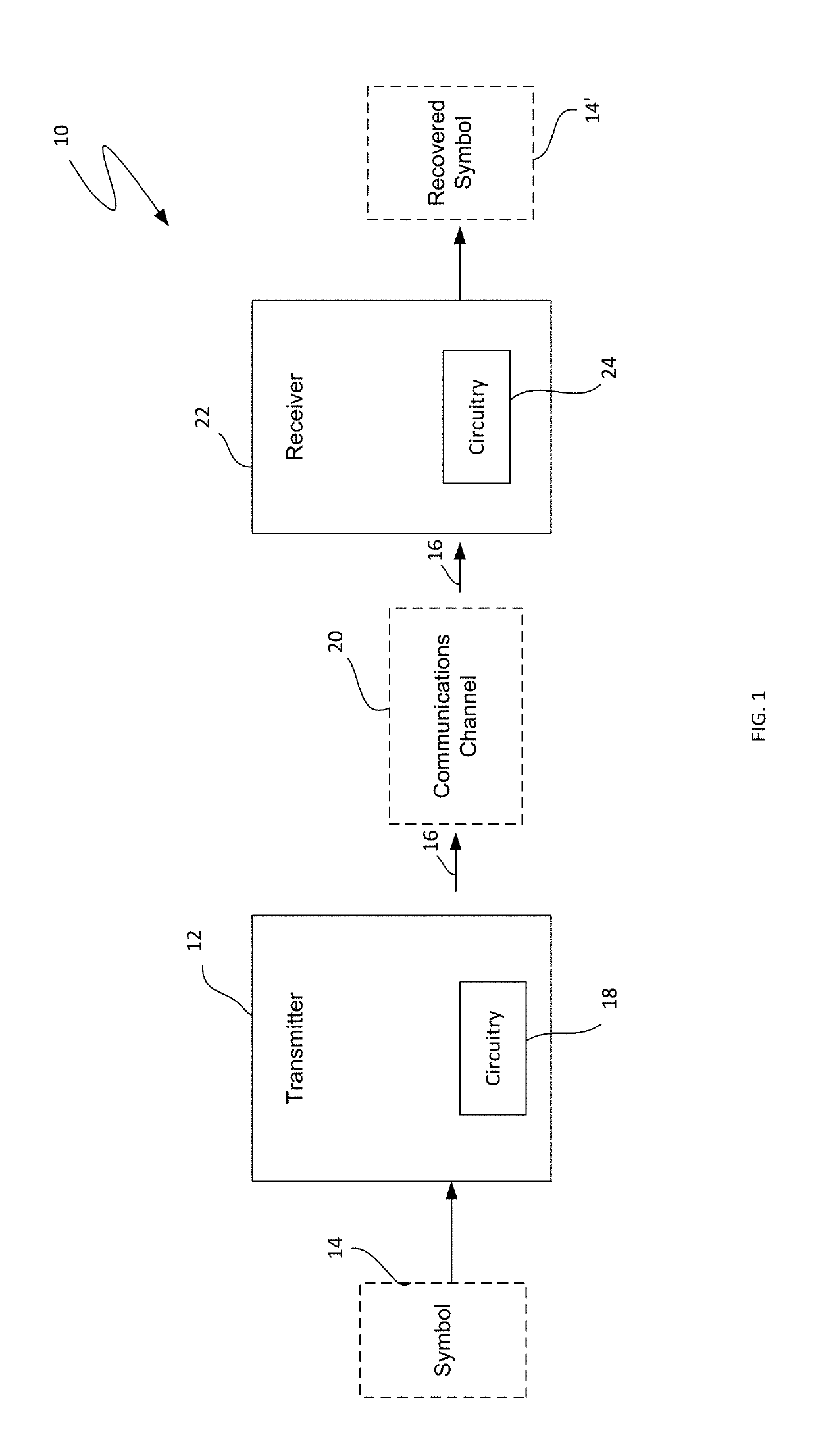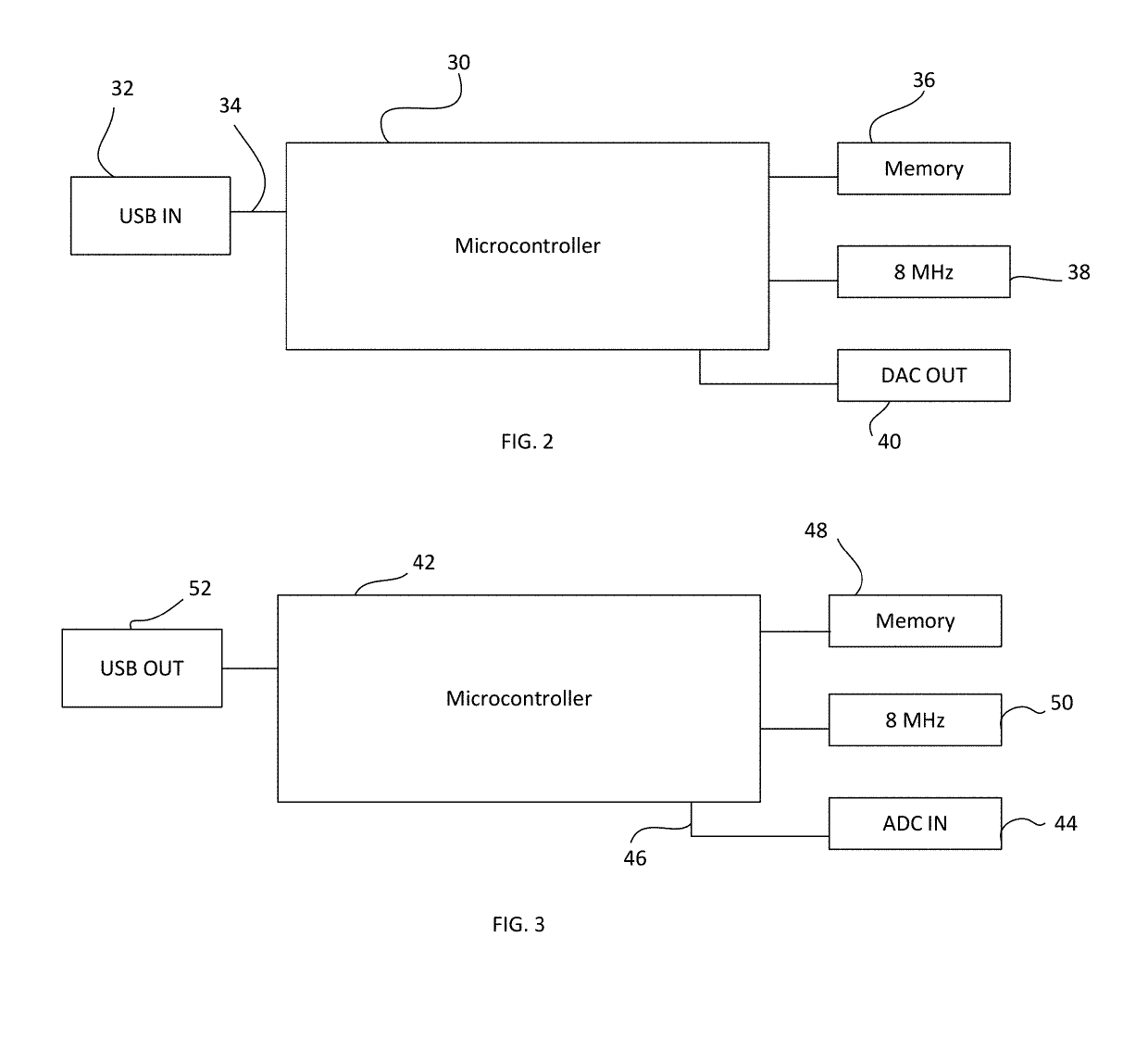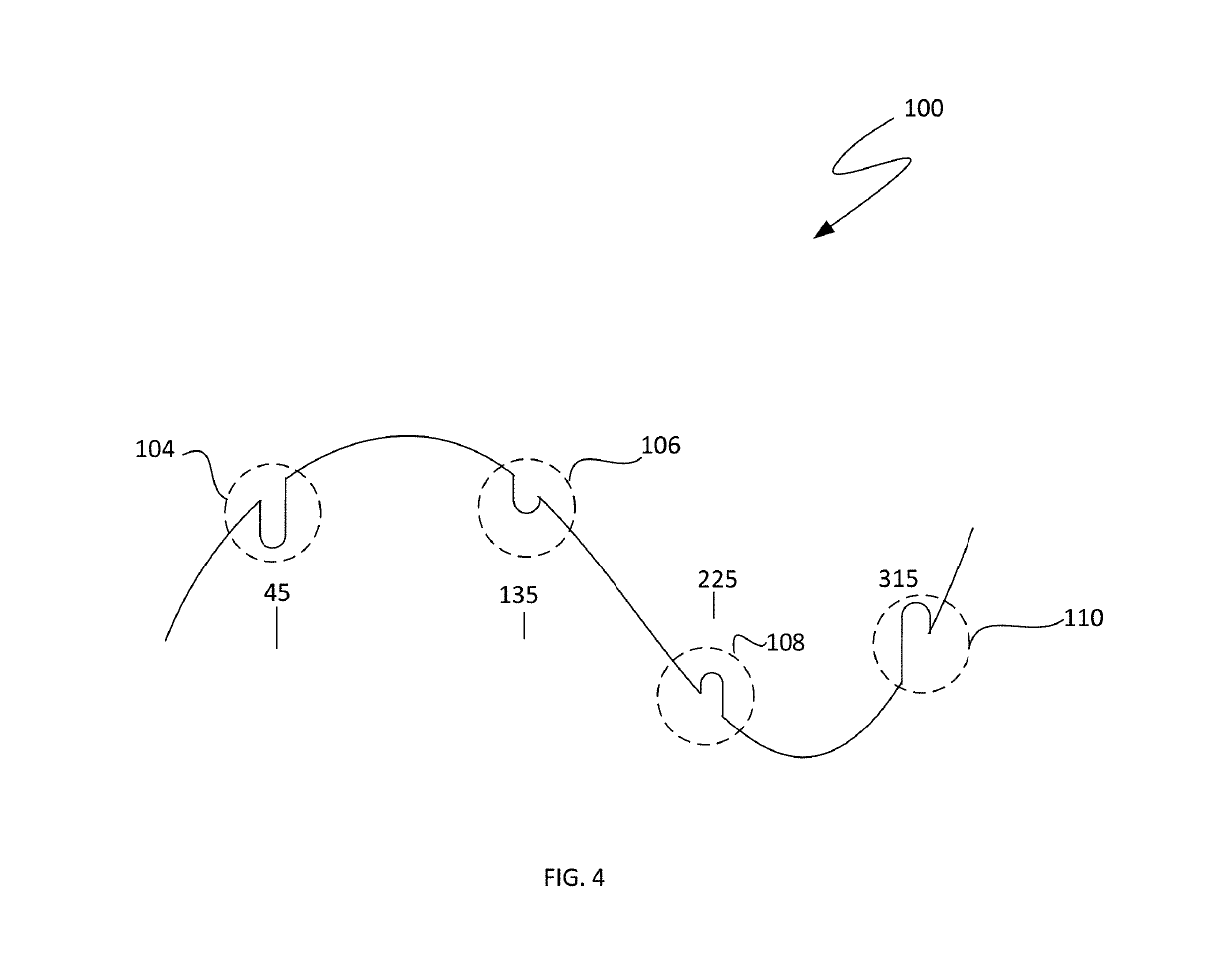Receiver for high spectral efficiency data communications system using encoded sinusoidal waveforms
- Summary
- Abstract
- Description
- Claims
- Application Information
AI Technical Summary
Benefits of technology
Problems solved by technology
Method used
Image
Examples
Embodiment Construction
[0065]Referring now to the drawings, wherein like numbers refer to like items, number 10 identifies a communications system constructed according to the present disclosure. With reference now to FIG. 1, the data transmission or communications system 10 is shown to comprise a transmitter 12 for receiving a symbol 14 and for generating a modulated sinusoidal waveform 16 representative of the symbol 14, and circuitry 18 for transmitting the modulated sinusoidal waveform 16 over a communications channel 20. The system 10 also comprises a receiver 22 for receiving the modulated sinusoidal waveform 16, and circuitry 24 for converting the modulated sinusoidal waveform into the symbol 14. The communications channel 20 may be provided by media such as coaxial cable, fiber optic cable, telephone or telephone company (telco) lines such as copper wires, open air as by radio frequency or space or satellite. The channel 20 may carry one or many messages. The system 10 will have input data, such a...
PUM
 Login to View More
Login to View More Abstract
Description
Claims
Application Information
 Login to View More
Login to View More - R&D
- Intellectual Property
- Life Sciences
- Materials
- Tech Scout
- Unparalleled Data Quality
- Higher Quality Content
- 60% Fewer Hallucinations
Browse by: Latest US Patents, China's latest patents, Technical Efficacy Thesaurus, Application Domain, Technology Topic, Popular Technical Reports.
© 2025 PatSnap. All rights reserved.Legal|Privacy policy|Modern Slavery Act Transparency Statement|Sitemap|About US| Contact US: help@patsnap.com



